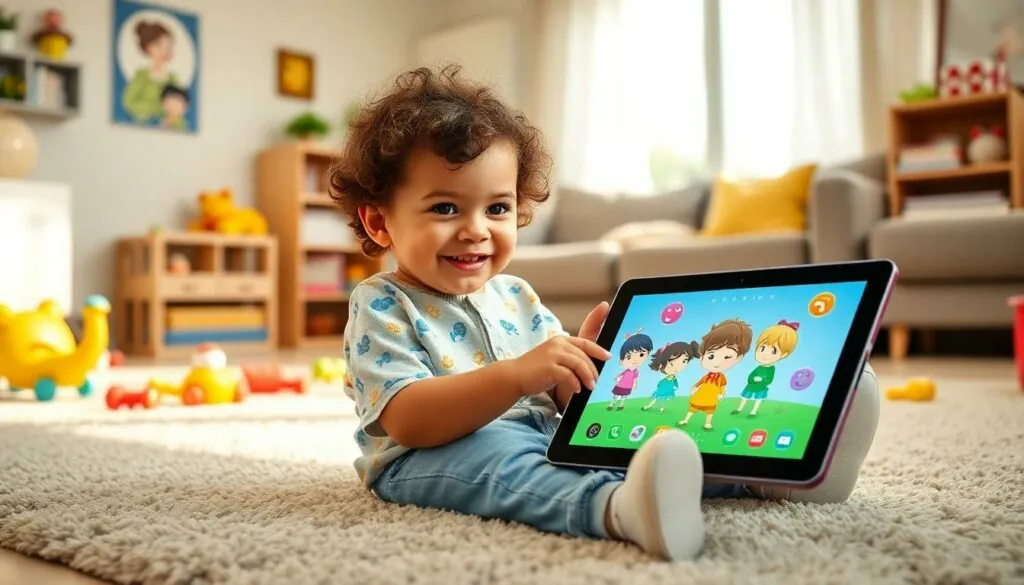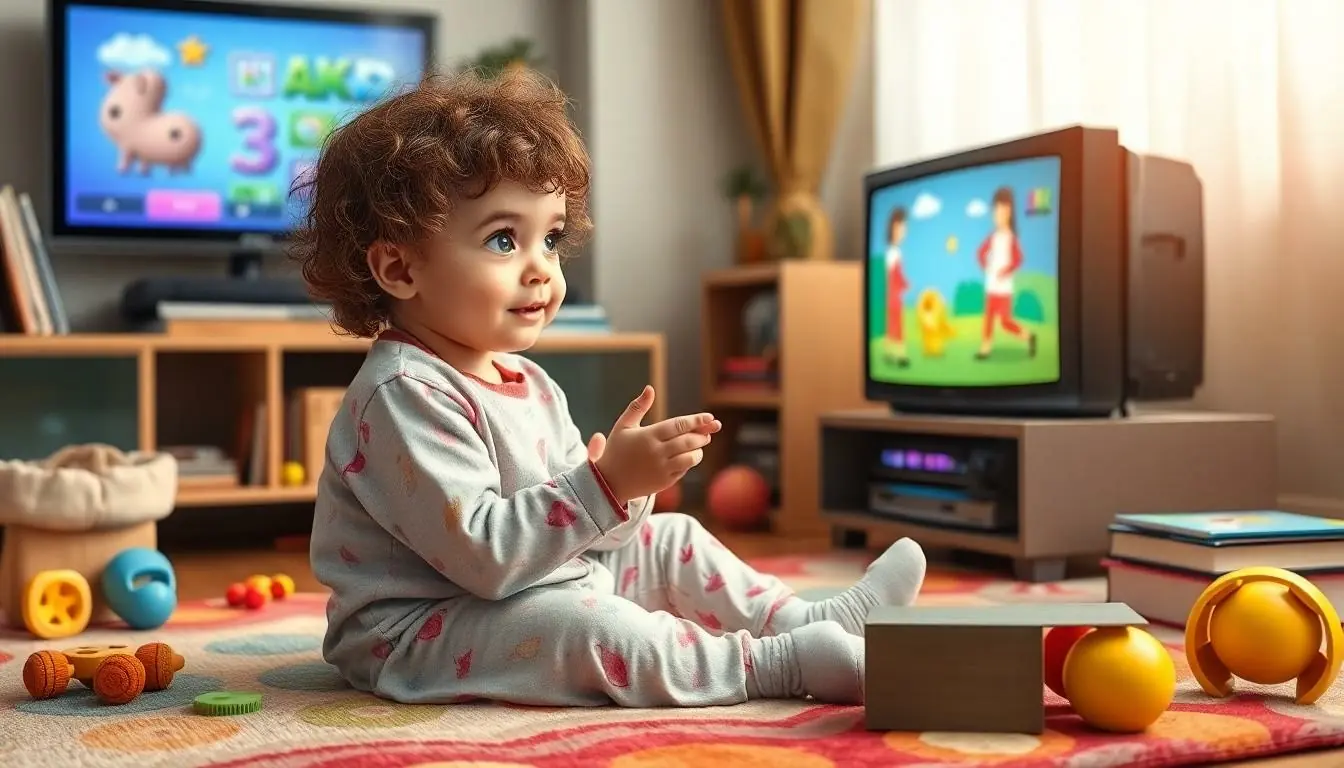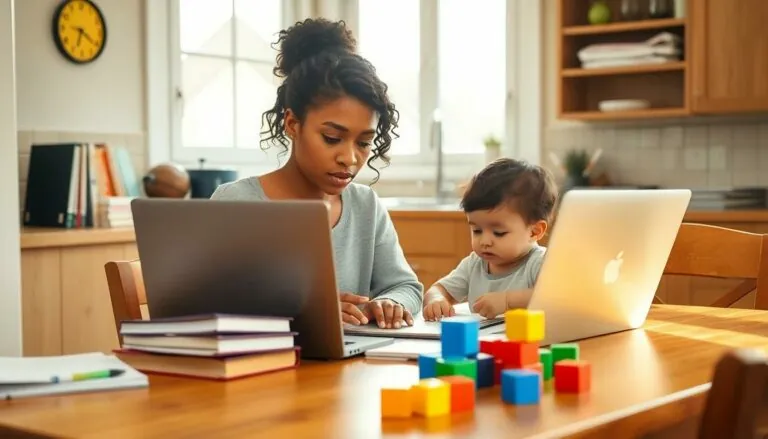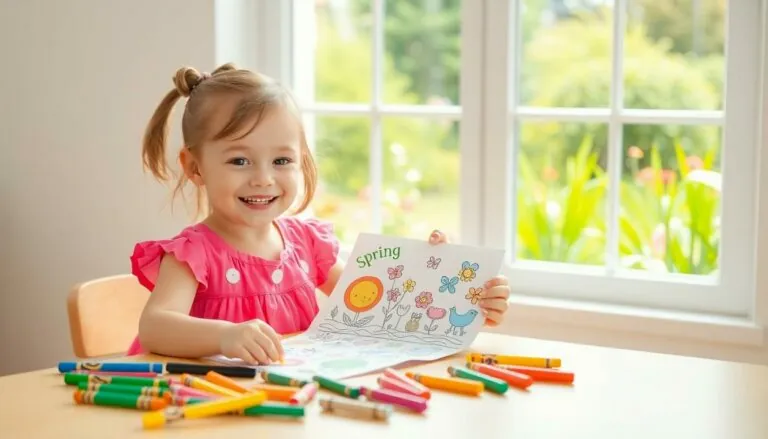Table of Contents
ToggleIn a world where screens are as common as toys, parents often wonder just how much TV is too much for their little ones. For a curious 3-year-old, the allure of colorful characters and catchy songs can be hard to resist. But is that daily dose of animated fun helping or hindering their development?
Finding the right balance between screen time and playtime isn’t just a parental juggling act; it’s a quest for sanity. After all, who wouldn’t want to trade a tantrum for a few minutes of peace? So, let’s dive into the nitty-gritty of screen time guidelines, explore the benefits and pitfalls, and discover how to make TV time a win-win for both kids and parents alike.
Understanding Screen Time Guidelines
Screen time guidelines help parents navigate media use for their 3-year-olds. Balancing screen time with other activities proves essential for healthy development.
Recommendations From Experts
Experts suggest limiting screen time for children aged 2 to 5 years to one hour per day. During this time, parents should choose high-quality programming. Content that is educational and age-appropriate supports healthy development. Viewing should always occur alongside an adult to encourage discussion. This interaction enhances learning and comprehension, reinforcing important values and social skills.
Age-Appropriate Viewing
Age-appropriate viewing involves selecting shows designed for preschoolers. Programs featuring simple concepts and relatable characters foster understanding. Animated content featuring interactive storytelling often engages young audiences effectively. Parents can choose programming that promotes creativity, emotional intelligence, and problem-solving. Regularly reviewing the content ensures it aligns with developmental milestones.
Effects of Television on Young Children
Television significantly influences the development of young children. Understanding both the positive and potential risks of screen time is essential for parents.
Positive Impacts
Educational programs can enhance language skills in young children. Viewing content that features simple vocabulary and relatable themes fosters communication. Interaction with shows designed for preschoolers may encourage imaginative play. Children often replicate scenarios from their favorite characters, aiding social development. Engaging visuals and stories promote curiosity and problem-solving abilities. Programs that include interactive elements allow for shared experiences, deepening connections between parents and kids.
Potential Risks
Excessive screen time poses several risks to young children. Studies indicate that too much television can lead to issues like obesity due to decreased physical activity. Language development might lag if children replace verbal interaction with screen engagement. Content lacking educational value can contribute to behavioral problems. Early exposure to inappropriate themes can lead to emotional distress. Parents must monitor viewing habits closely to mitigate these risks effectively.
Tips for Managing TV Time
Managing TV time for 3-year-olds can be straightforward with the right strategies in place. Implementing structured guidelines fosters a balanced approach to screen time.
Setting Limits
Set specific viewing limits to promote healthier habits. Experts recommend no more than one hour of quality programming per day for children aged 2 to 5 years. Breaking this timeframe into smaller segments can help maintain engagement without overwhelming them. Consider using timers to signal the end of a viewing session, ensuring it’s a seamless transition. Discussing the rationale behind the limits fosters understanding and cooperation in children. Consistency is key; regularly enforce these limits to establish a predictable routine.
Choosing Quality Content
Select high-quality content to maximize developmental benefits. Prioritize educational programs designed specifically for preschoolers, which incorporate simple concepts and relatable characters. Look for shows that encourage creativity, emotional intelligence, and problem-solving skills. Reading reviews or consulting trusted sources can help identify suitable options. Viewing accompanied by an adult enhances comprehension; discussions about the content reinforce learning. Regularly assess the appropriateness of shows as children grow, ensuring the material remains relevant and beneficial.
Alternatives to Screen Time
Exploring alternatives to screen time can foster creativity and development in young children. Engaging in different activities can provide enriching experiences that contribute to their growth.
Engaging Activities
Art and crafts captivate young children’s attention and stimulate imaginative thinking. Providing materials like crayons, paper, and clay fosters creativity and fine motor skills. Puzzles enhance problem-solving abilities while encouraging concentration. Storytime encourages language development and nurtures a love for reading. Music and movement activities promote physical coordination and self-expression. Games with simple rules help develop social skills and teamwork. Incorporating such engaging activities offers diverse opportunities for interactive learning outside of screens.
Encouraging Outdoor Play
Outdoor play serves as a key element for physical and mental development. Time spent outside boosts children’s mood and encourages exploration. Playing in parks or backyards allows for crucial social interactions. Activities like running, jumping, and climbing strengthen gross motor skills while enhancing confidence. Nature walks promote curiosity about the environment and teach kids about the world around them. Establishing regular outdoor playtime helps create a balanced routine that supports overall well-being.
Conclusion
Finding the right balance of screen time for a 3-year-old is crucial for their development. By adhering to expert guidelines and focusing on high-quality content, parents can ensure that television serves as a positive influence. Engaging with children during viewing sessions enhances their understanding and fosters meaningful discussions.
Incorporating alternative activities like outdoor play and creative projects can further enrich a child’s experience. Parents should regularly assess their child’s media consumption and adjust as needed to promote healthy habits. By being proactive and mindful, families can create a well-rounded environment that supports growth and learning while enjoying the occasional screen time together.








